The Daily Shot: 02-May-23
• The United States
• Canada
• The Eurozone
• Europe
• Japan
• Asia-Pacific
• China
• Cryptocurrency
• Commodities
• Equities
• Credit
• Rates
• Food for Thought
The United States
1. US manufacturing activity continued to contract in April, but the pace of declines eased slightly.
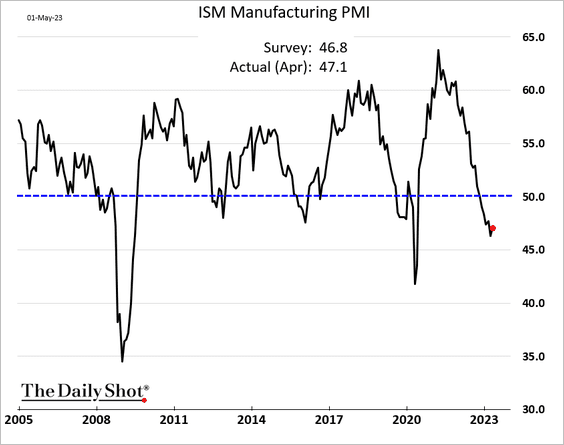
 Source: Reuters Read full article
Source: Reuters Read full article
• Demand keeps weakening.
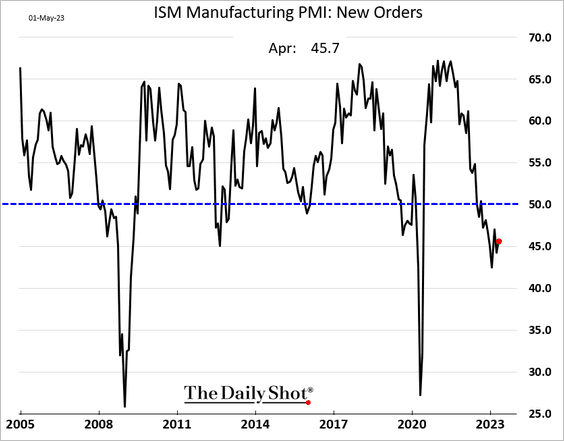
• Manufacturing employment stabilized last month.
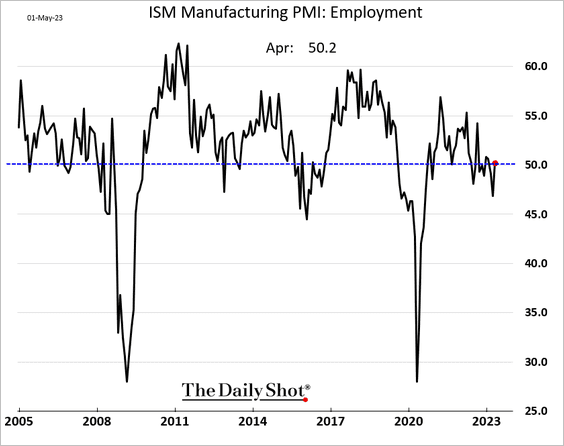
• Manufacturers now perceive customers’ inventory levels as increasing.
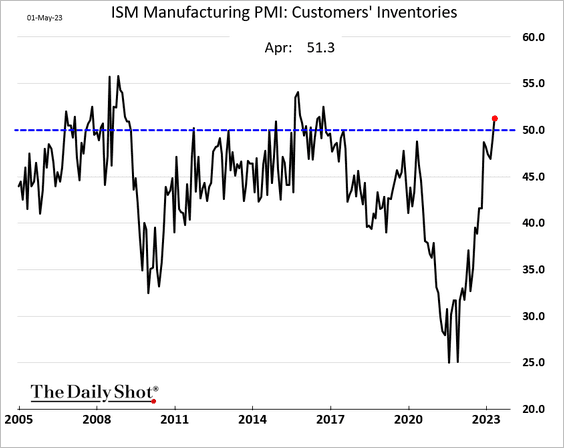
• Costs are rising again.
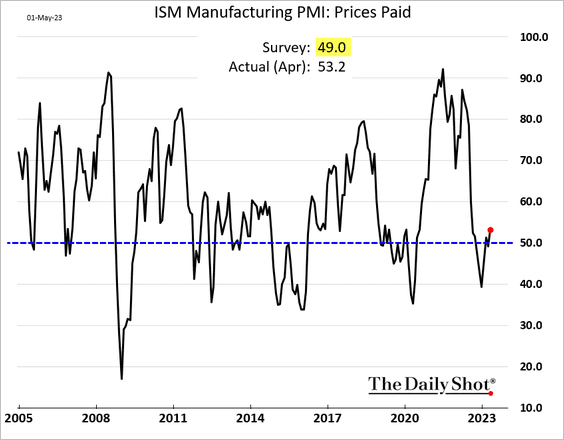
• Here are the contributions to the ISM level (1st panel) and monthly changes (2nd panel).
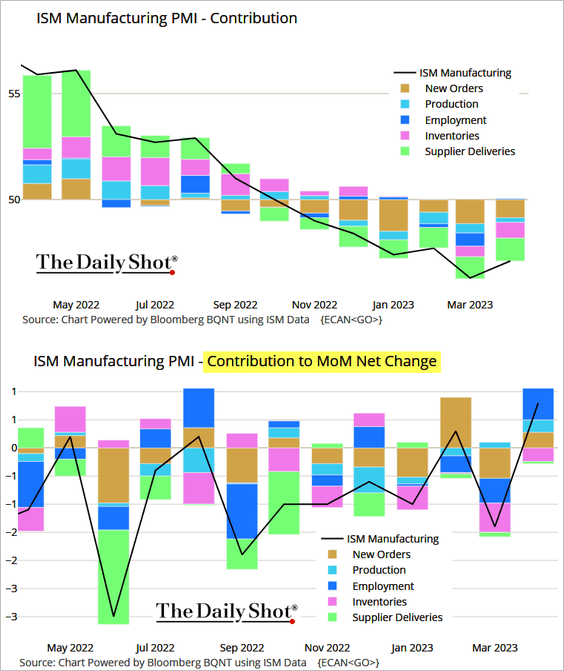 Source: @TheTerminal, Bloomberg Finance L.P.
Source: @TheTerminal, Bloomberg Finance L.P.
• The stock market points to improvements ahead for US manufacturing.
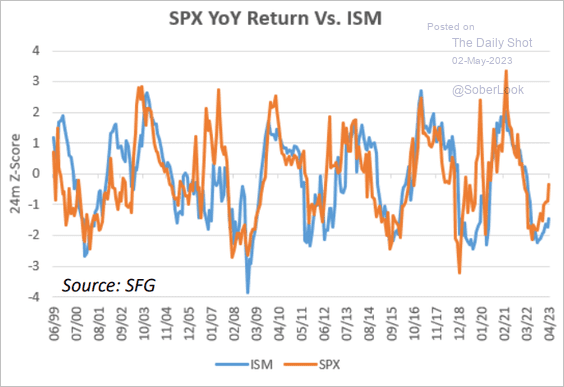 Source: Chris Murphy, Susquehanna International Group
Source: Chris Murphy, Susquehanna International Group
——————–
2. After three months of declines, construction spending increased in March.
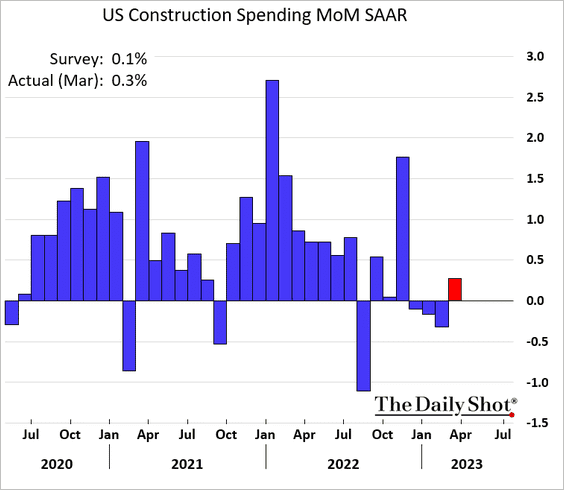
• Private nonresidential construction spending continues to grind higher as residential expenditures slow.
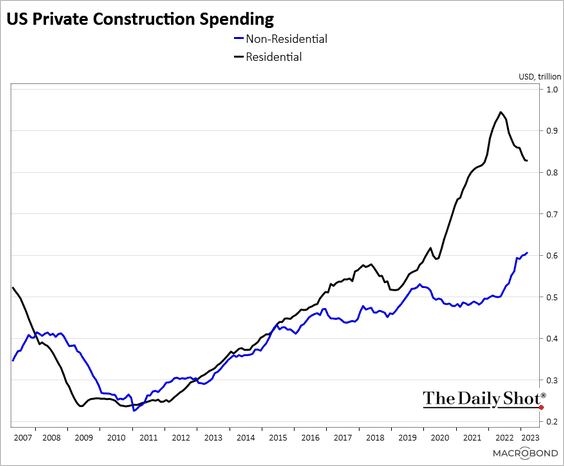 Source: Chart and data provided by Macrobond
Source: Chart and data provided by Macrobond
• Architecture billings have stabilized.
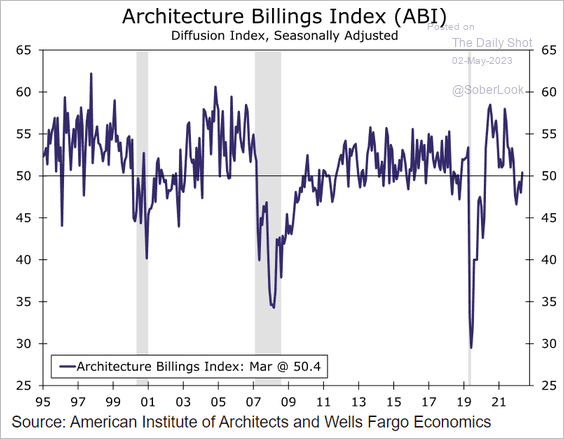 Source: Wells Fargo Securities
Source: Wells Fargo Securities
——————–
3. Listings of homes for sale are falling quickly and may soon dip below last year’s levels.
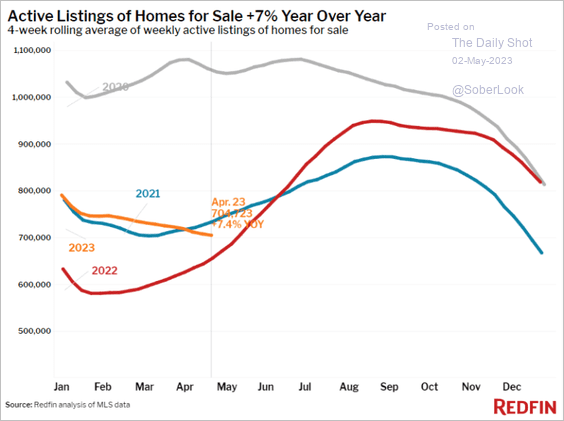 Source: Redfin
Source: Redfin
New listings are down 22.4% vs. 2022.
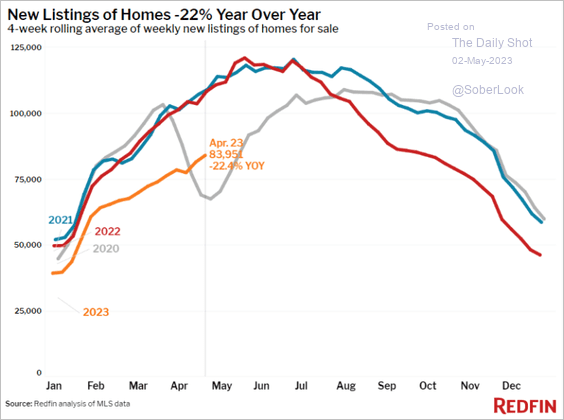 Source: Redfin
Source: Redfin
The median price is currently only 2.8% lower than what we observed in 2022.
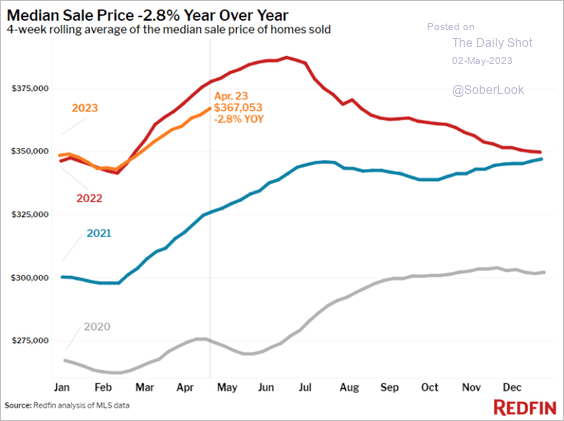 Source: Redfin
Source: Redfin
——————–
4. The fiscal policy drag that has been slowing the economy is about to disappear.
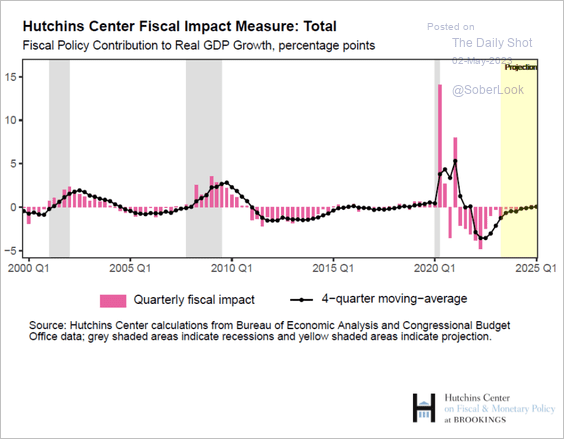 Source: Brookings Read full article
Source: Brookings Read full article
5. The federal government missed out on locking in low long-term rates in recent years, causing interest payments to surge.
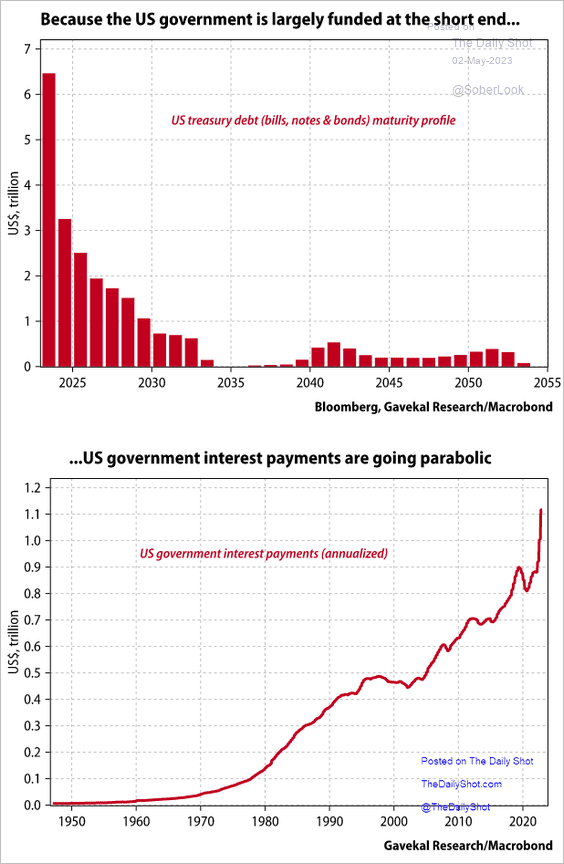 Source: Gavekal Research
Source: Gavekal Research
6. A 25 bps Fed rate hike this week is baked in. The US central bank is likely to pause from there until the debt ceiling situation is resolved.
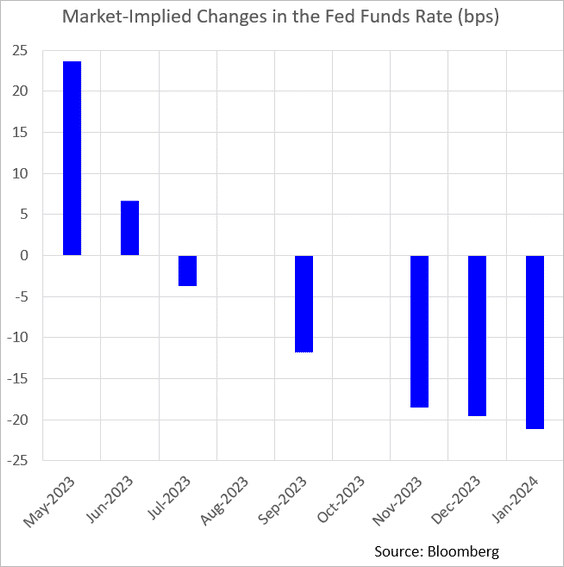
The expected terminal rate continues to grind higher, with the peak fed funds rate now firmly above 5%.
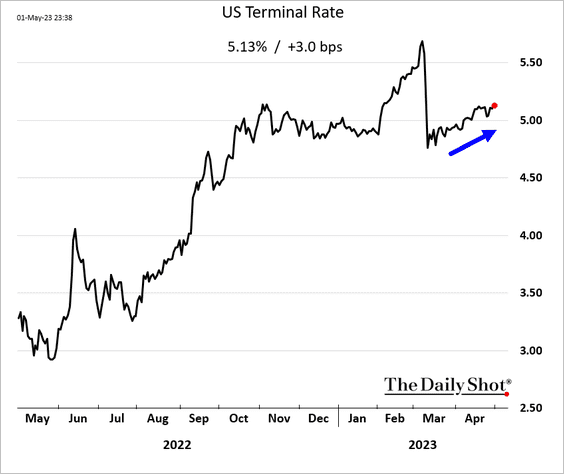
Back to Index
Canada
1. Factory activity stabilized in April, showing modest growth.
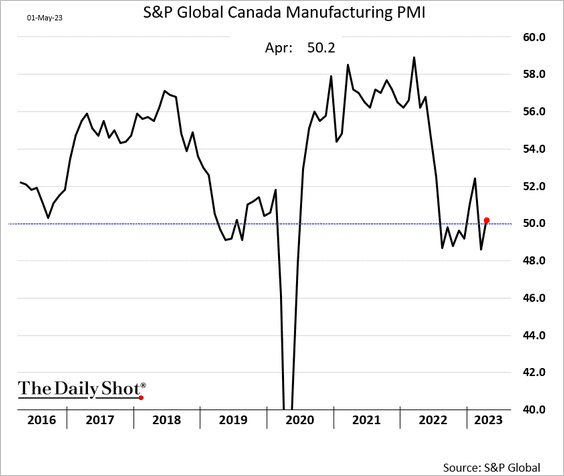
2. Consumer confidence is rebounding, …
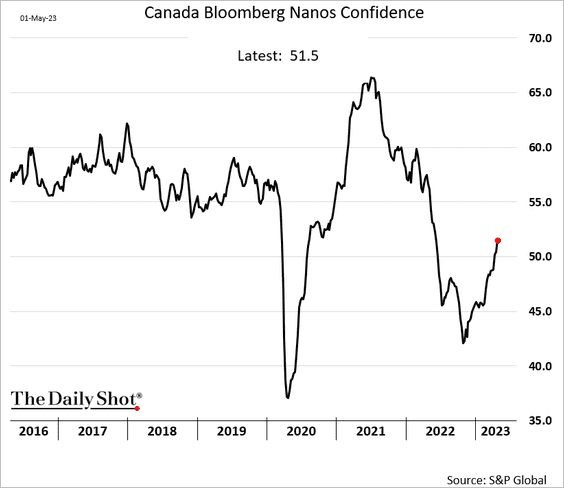
… boosted by improved housing market sentiment.
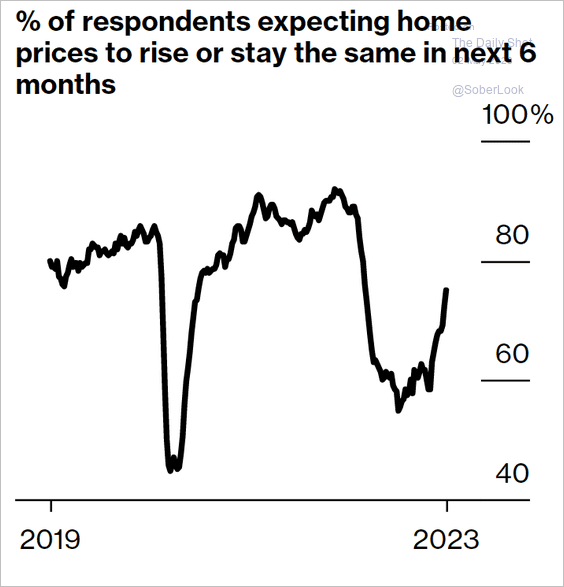 Source: @ErikHertzberg, @economics Read full article
Source: @ErikHertzberg, @economics Read full article
——————–
3. Financial conditions are still restrictive.
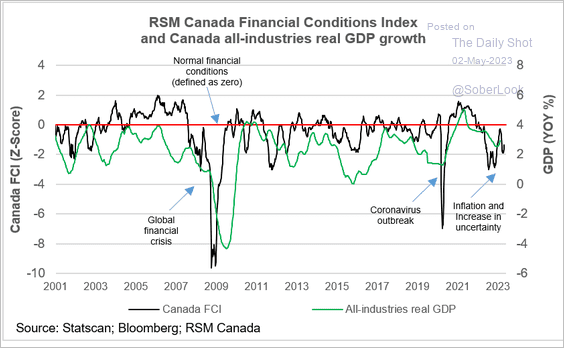 Source: The Real Economy Blog Read full article
Source: The Real Economy Blog Read full article
4. The housing market remains tight. (2 charts)
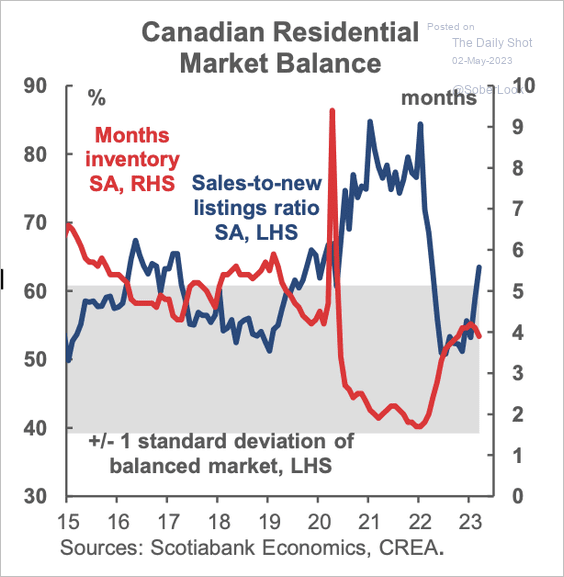 Source: Scotiabank Economics
Source: Scotiabank Economics
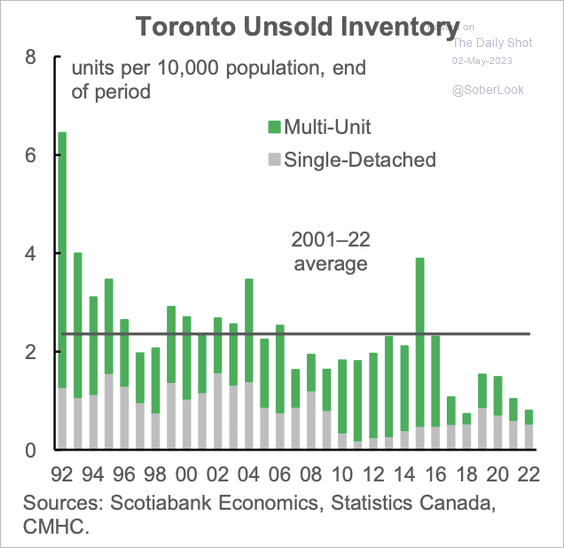 Source: Scotiabank Economics
Source: Scotiabank Economics
Mortgage interest costs have accelerated along with rising rent and insurance rates.
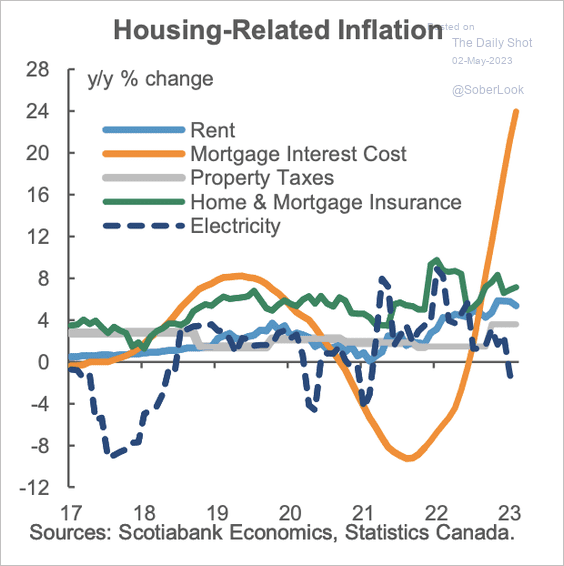 Source: Scotiabank Economics
Source: Scotiabank Economics
Back to Index
The Eurozone
1. Germany’s unemployment rate held steady in April.
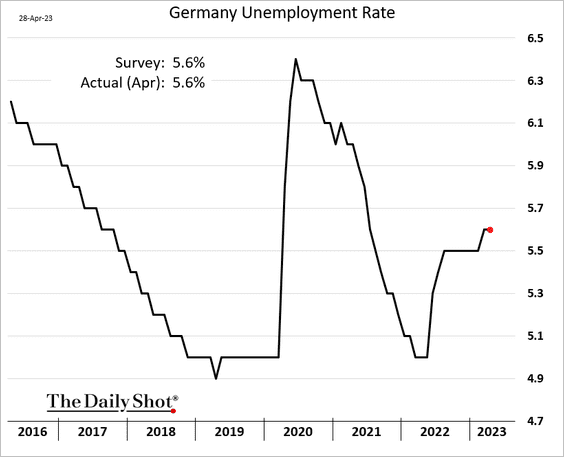
2. French consumer spending on goods has been weakening, with the March print below expectations.
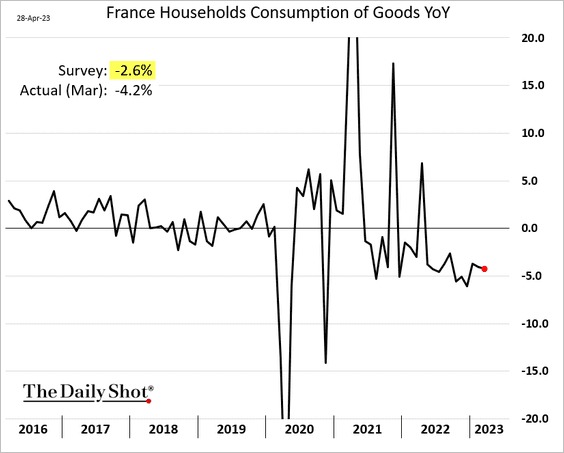
3. Italian wage growth hit a multi-year high.
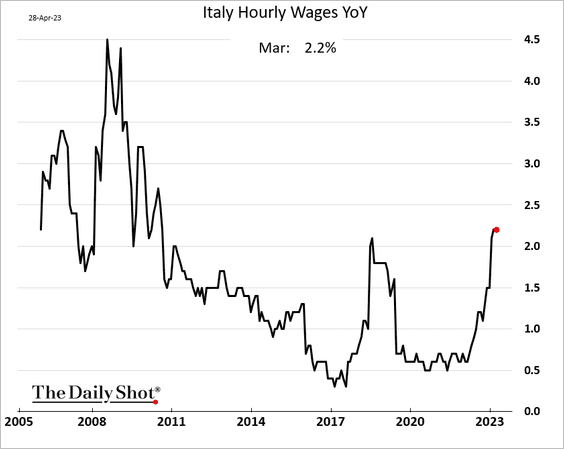
Separately, higher yields from new loan originations could help Italian bank earnings.
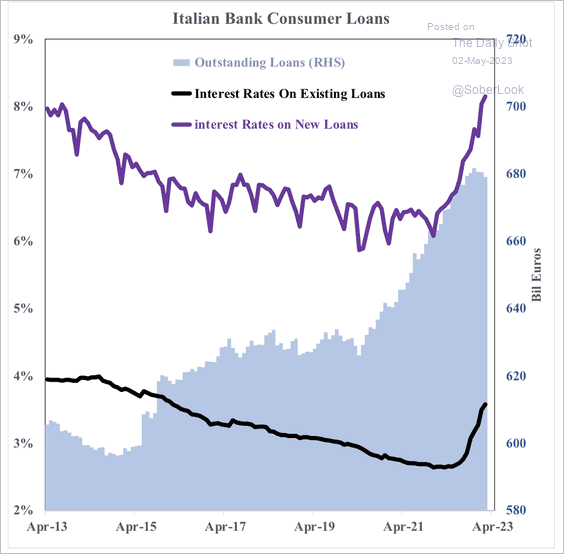 Source: SOM Macro Strategies
Source: SOM Macro Strategies
——————–
4. This summer, substantial TLTRO repayments are due, which could be viewed as a type of quantitative tightening.
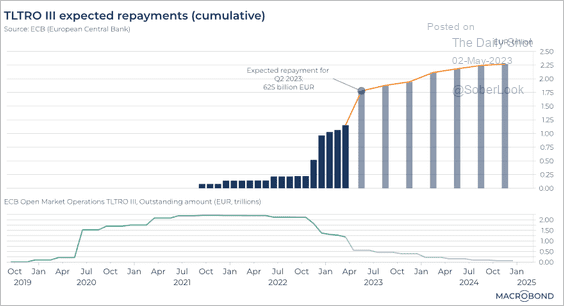 Source: Macrobond
Source: Macrobond
5. Are the PMI indicators signaling a GDP rebound?
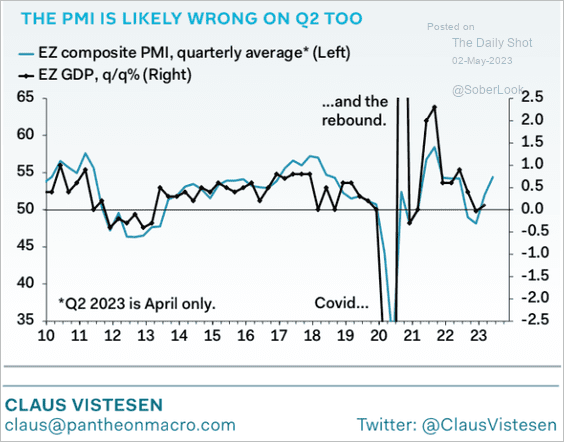 Source: Pantheon Macroeconomics
Source: Pantheon Macroeconomics
Back to Index
Europe
1. The market sees a 25 bps BoE rate hike this month and potentially another increase in June.
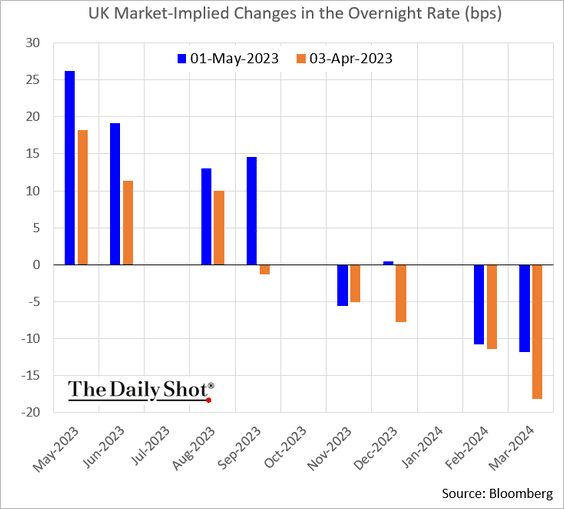
2. There is a wide relative performance gap between European real estate and US REITs.
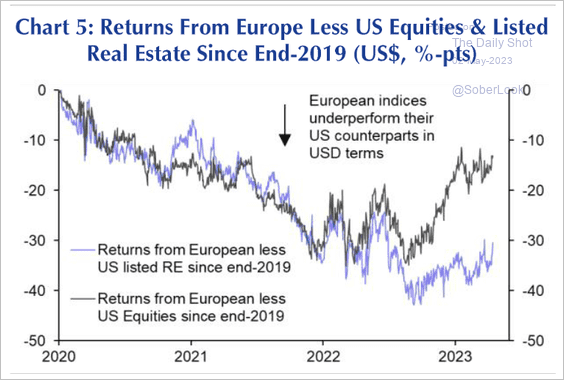 Source: Capital Economics
Source: Capital Economics
3. This chart shows European meat production over time.
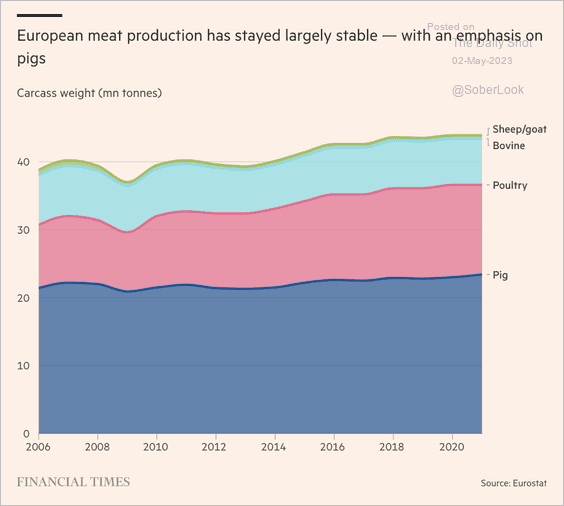 Source: @financialtimes Read full article
Source: @financialtimes Read full article
Back to Index
Japan
1. Consumer confidence is rebounding rapidly.
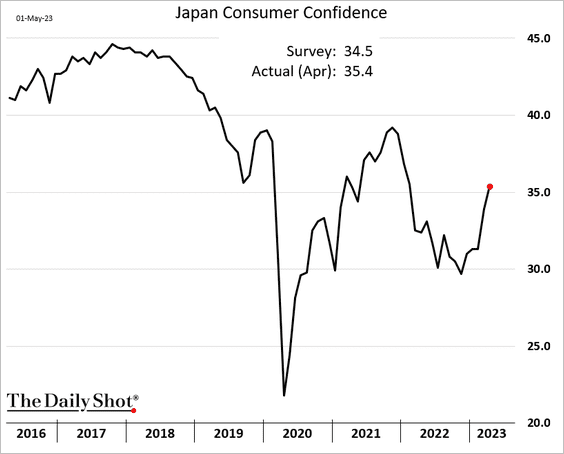
2. The BoJ’s balance sheet as a share of GDP is now the largest among major central banks.
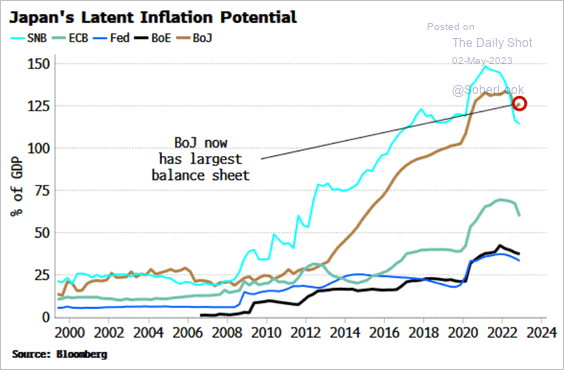 Source: Simon White, Bloomberg Markets Live Blog
Source: Simon White, Bloomberg Markets Live Blog
3. The yen is cheap relative to the Swiss franc.
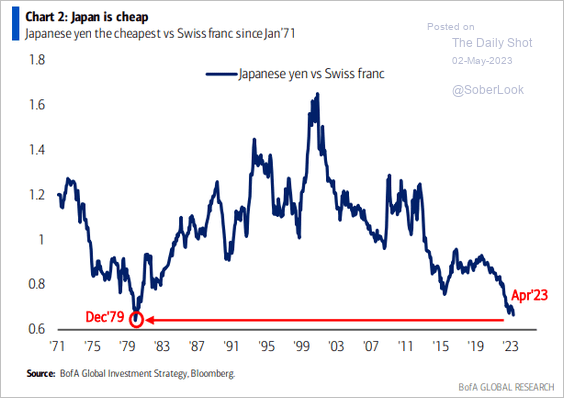 Source: BofA Global Research
Source: BofA Global Research
Back to Index
Asia-Pacific
1. South Korea’s core inflation has finally peaked.
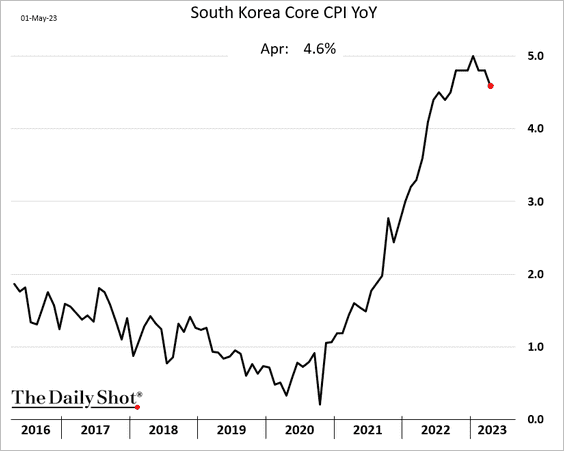
Factory activity continues to contract.
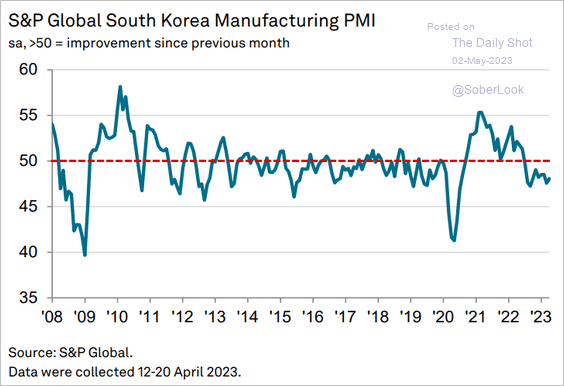 Source: S&P Global PMI
Source: S&P Global PMI
——————–
2. Taiwan’s manufacturing activity weakened in April.
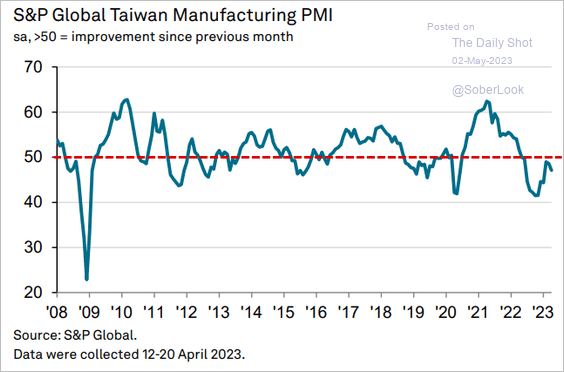 Source: S&P Global PMI
Source: S&P Global PMI
3. Investors’ inflation expectations for Asia hit an eight-year low, according to a survey by BofA.
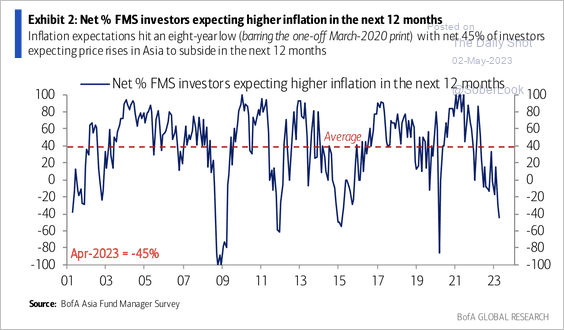 Source: BofA Global Research
Source: BofA Global Research
Back to Index
China
1. USD/CNH (offshore yuan) is at the 200-day moving average resistance (CNH is weakening against the dollar).
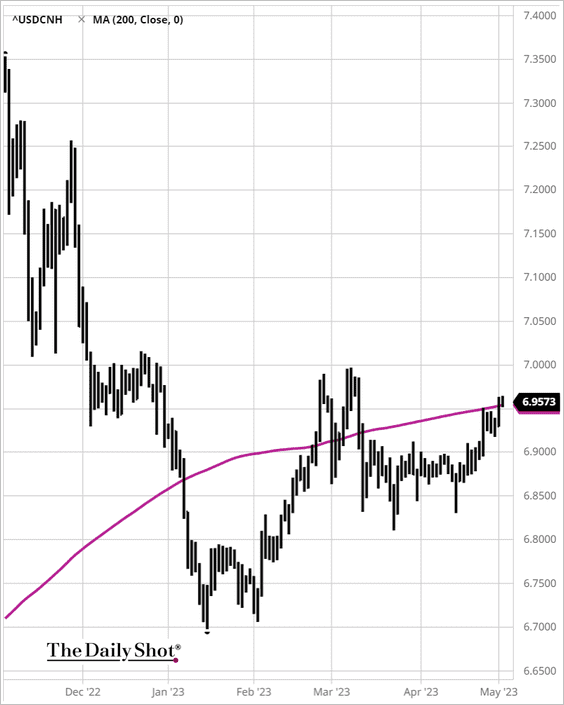 Source: barchart.com
Source: barchart.com
2. Easing financial conditions could benefit earnings growth.
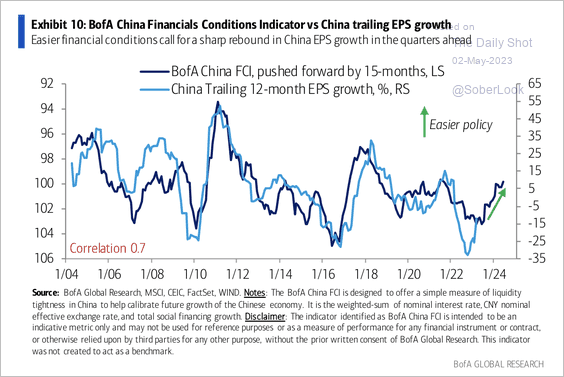 Source: BofA Global Research
Source: BofA Global Research
3. Chinese consumers have been shopping.
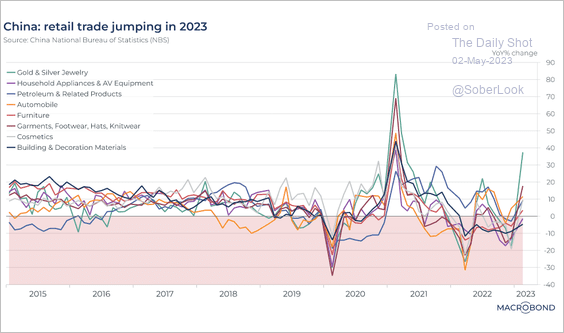 Source: Macrobond
Source: Macrobond
Back to Index
Cryptocurrency
1. Bitcoin’s daily transaction counts are approaching all-time highs.
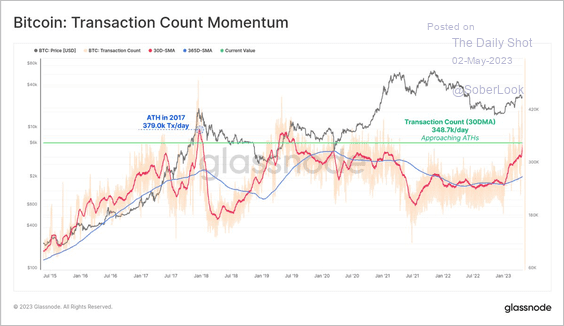 Source: @glassnode
Source: @glassnode
2. Short-term bitcoin holders experienced some of the most profitable days on record during the latest crypto rally.
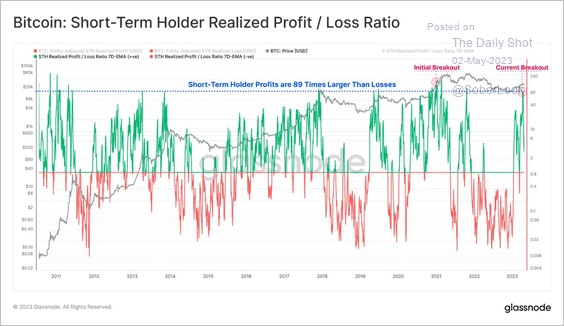 Source: @glassnode
Source: @glassnode
3. Demand for Tether’s USDT stablecoin on Turkish markets spiked.
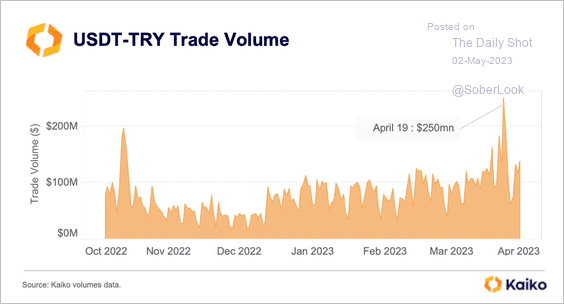 Source: @KaikoData
Source: @KaikoData
4. Crypto exchange web traffic has declined since last summer, although India remained active.
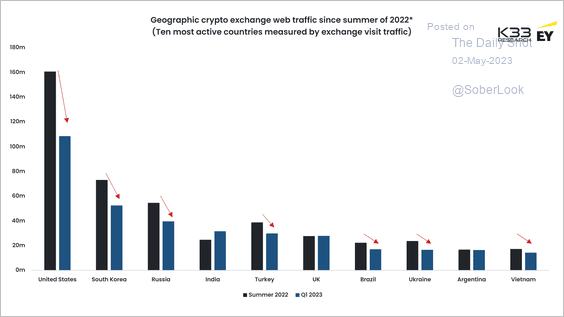 Source: @K33Research
Source: @K33Research
Back to Index
Commodities
1. Central banks in Turkey, China, and India were the top buyers of gold in January and February.
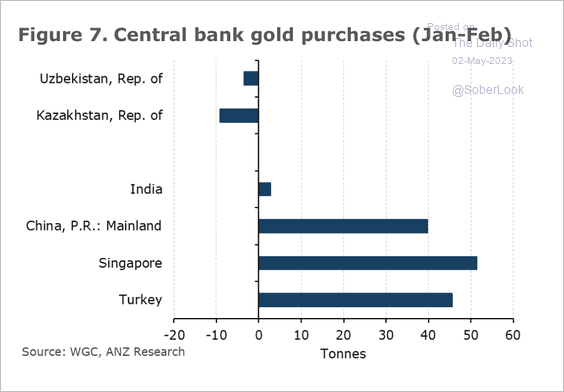 Source: @ANZ_Research
Source: @ANZ_Research
2. New York sugar futures fell from an 11-year high on Monday.
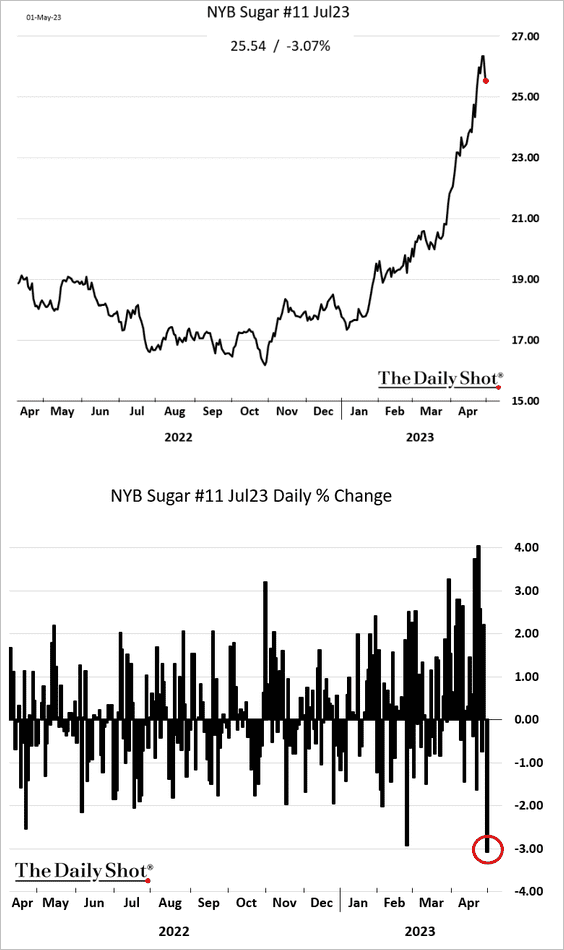
3. Wheat prices remain under pressure.
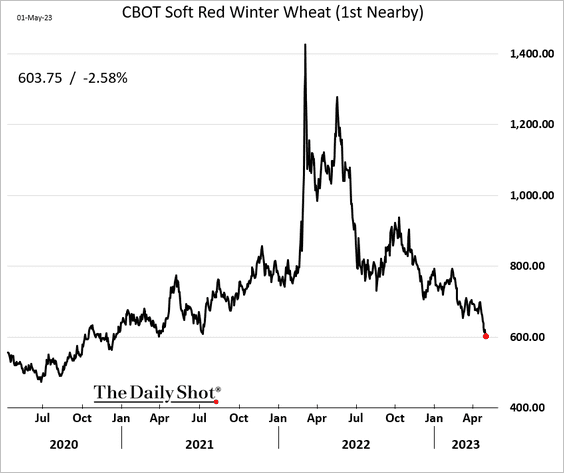
 Source: barchart.com Read full article
Source: barchart.com Read full article
——————–
4. This chart shows the drivers of US corn demand.
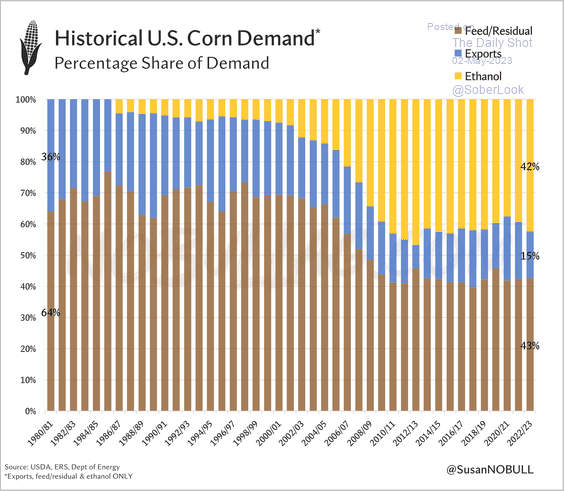 Source: @SusanNOBULL, @Barchart Read full article
Source: @SusanNOBULL, @Barchart Read full article
Back to Index
Equities
1. Banks getting snuffed out of existence in a single weekend is putting pressure on the regional banking sector.
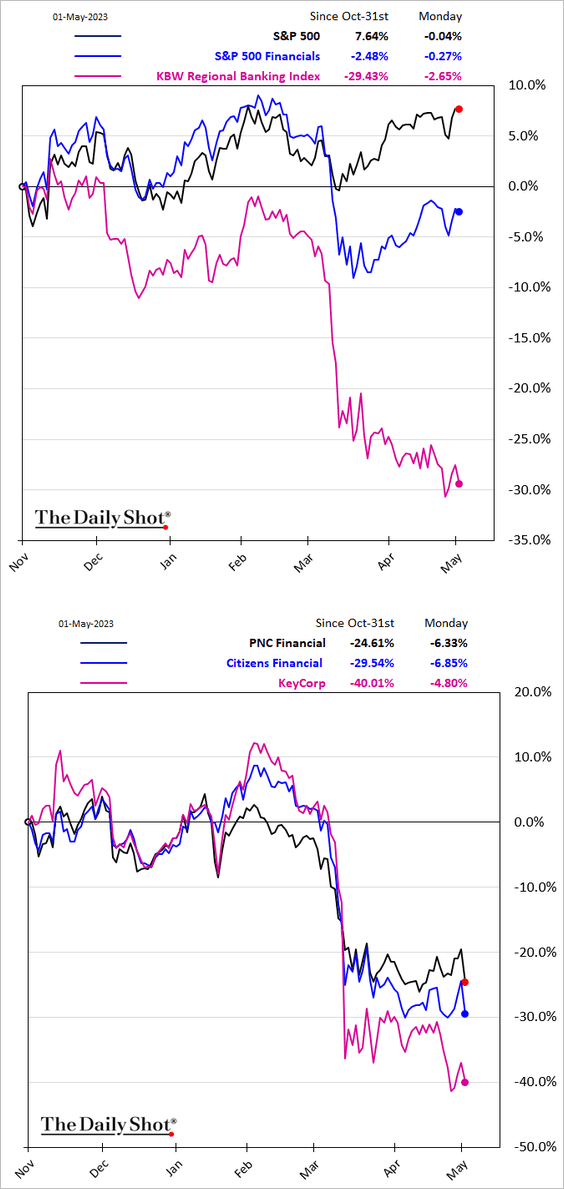
But the largest banks are performing well.
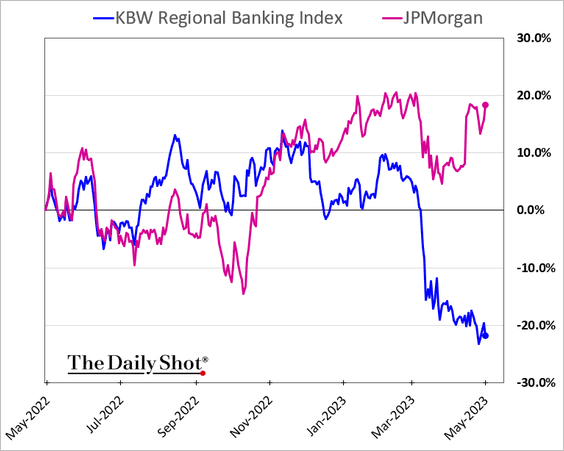
——————–
2. Apple’s and Microsoft’s combined weight in the S&P 500 hit a record high.
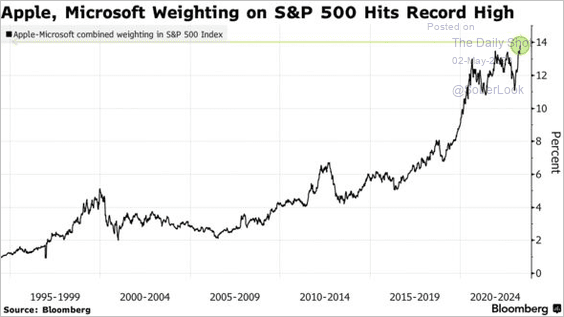 Source: @Subrat_Patnaik, @technology Read full article
Source: @Subrat_Patnaik, @technology Read full article
3. Stocks with the highest interest coverage are increasingly dominant in the S&P 500.
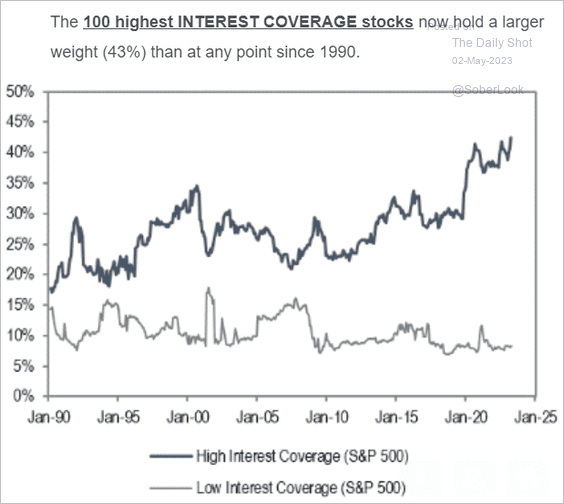 Source: Piper Sandler
Source: Piper Sandler
4. Consumer Staples shares held up well over the past couple of years.
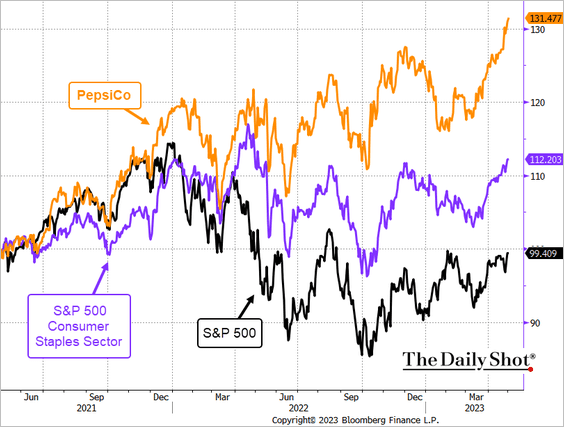 Source: @TheTerminal, Bloomberg Finance L.P.
Source: @TheTerminal, Bloomberg Finance L.P.
5. Declining correlation among S&P 500 members lowered the overall index volatility.
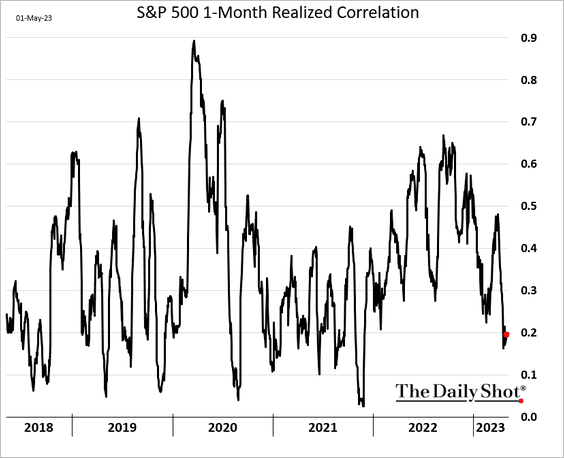
6. Equity implied volatility is too low, given elevated credit spreads.
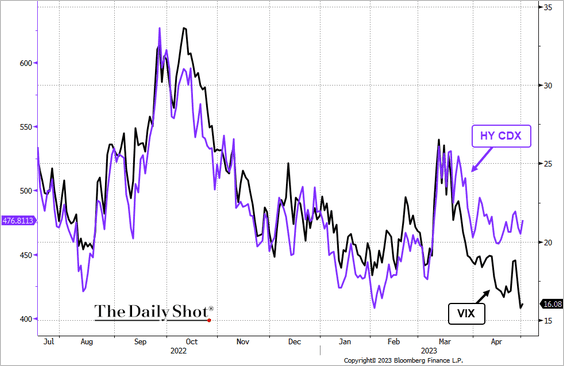 Source: @TheTerminal, Bloomberg Finance L.P.
Source: @TheTerminal, Bloomberg Finance L.P.
7. Market breadth has deteriorated.
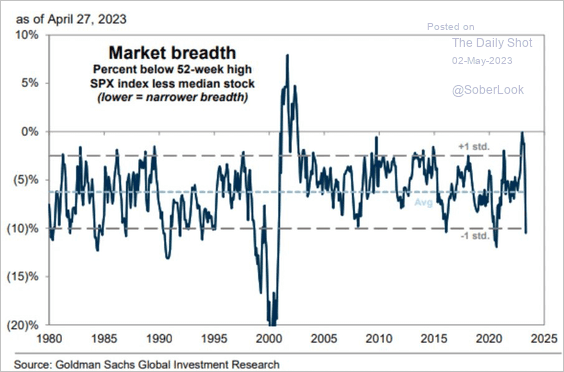 Source: Goldman Sachs; @carlquintanilla
Source: Goldman Sachs; @carlquintanilla
8. Valuation multiples are likely to contract in a recession.
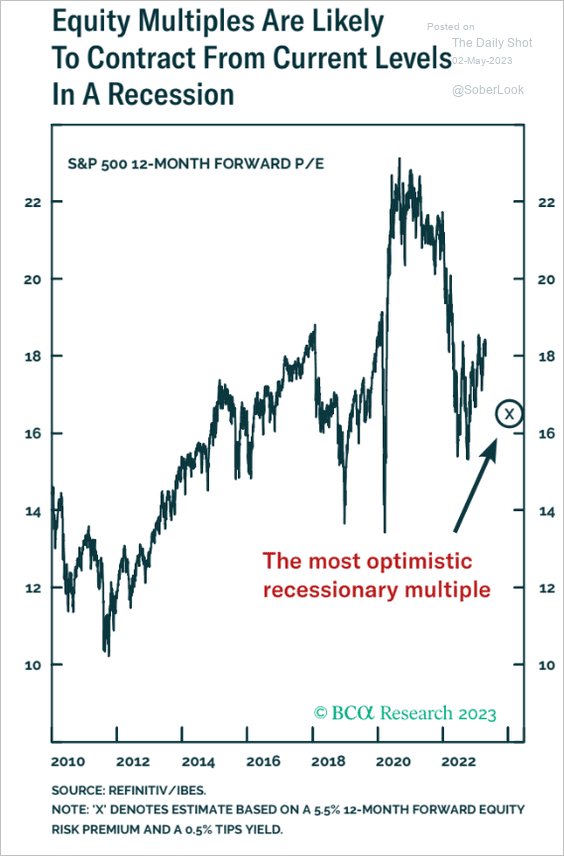 Source: BCA Research
Source: BCA Research
9. The breadth as well as the size of earnings beats bounced in the current earnings season.
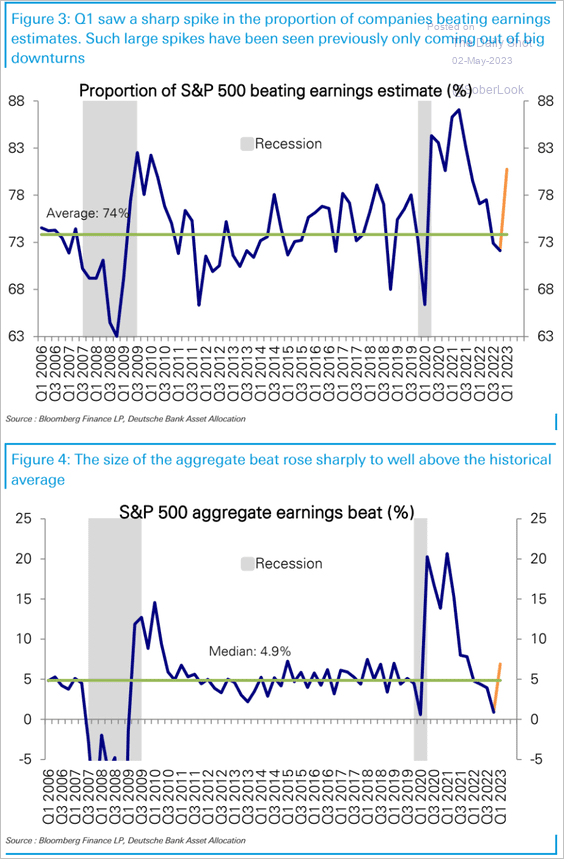 Source: Deutsche Bank Research
Source: Deutsche Bank Research
The 12-month forward earnings expectations jumped.
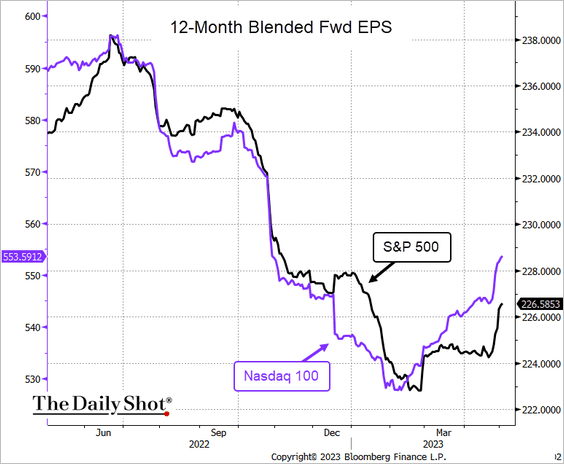 Source: @TheTerminal, Bloomberg Finance L.P.
Source: @TheTerminal, Bloomberg Finance L.P.
——————–
10. Retail investors seem to have capitulated (bought high and sold low.)
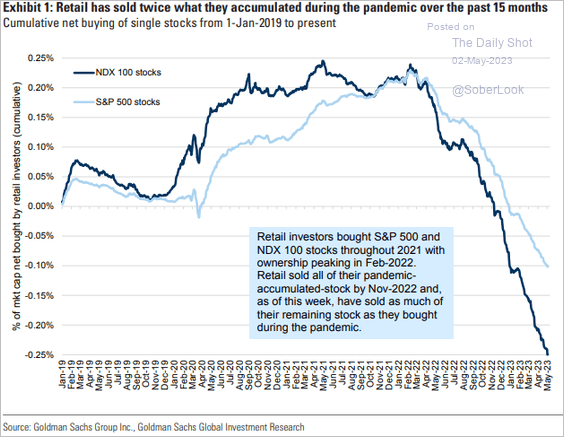 Source: Goldman Sachs; @SethCL, h/t @chartrdaily
Source: Goldman Sachs; @SethCL, h/t @chartrdaily
Back to Index
Credit
1. Let’s start with the chart of US bank failures.
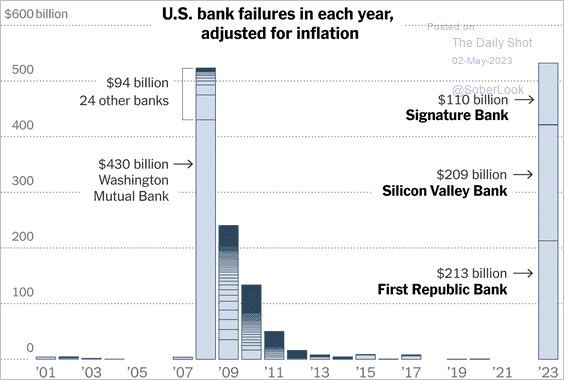 Source: The New York Times Read full article
Source: The New York Times Read full article
2. Rejections of credit applications spiked last month, according to NACM.
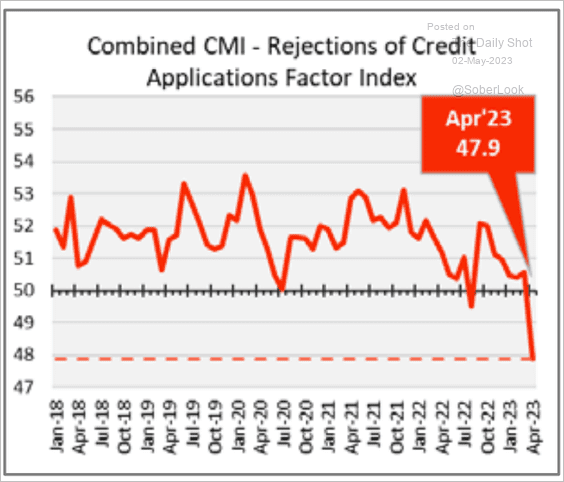 Source: NACM
Source: NACM
3. More companies are talking about credit on earnings calls.
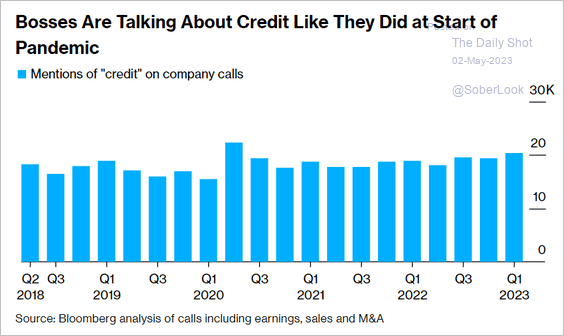 Source: @ncallanan, @markets Read full article
Source: @ncallanan, @markets Read full article
4. The money supply continues to shrink.
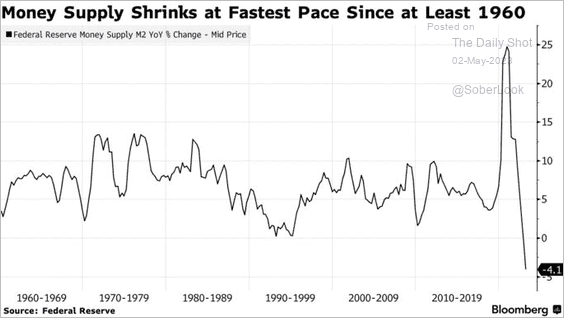 Source: @ncallanan, @markets Read full article
Source: @ncallanan, @markets Read full article
Back to Index
Rates
1. The Treasury bill curve remains distorted amid the debt ceiling “game of chicken.”
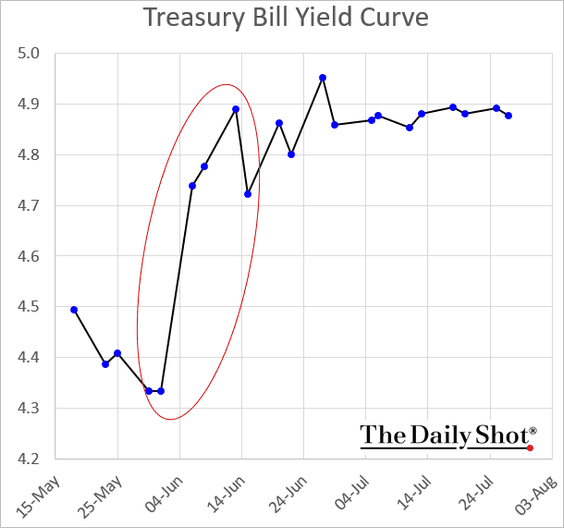
 Source: @WSJ Read full article
Source: @WSJ Read full article
——————–
2. Bets on long-term Treasuries jumped before the FOMC meeting.
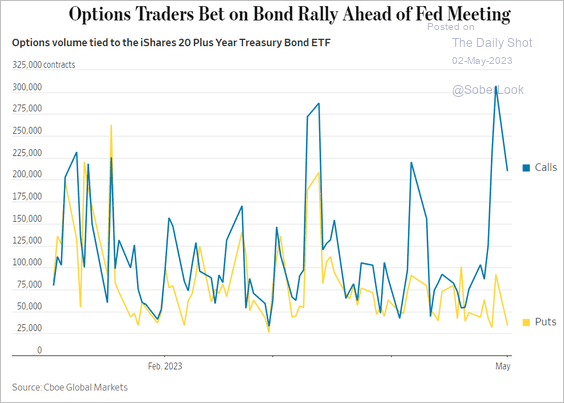 Source: @WSJ Read full article
Source: @WSJ Read full article
3. JP Morgan’s clients are increasingly bullish on Treasuries.
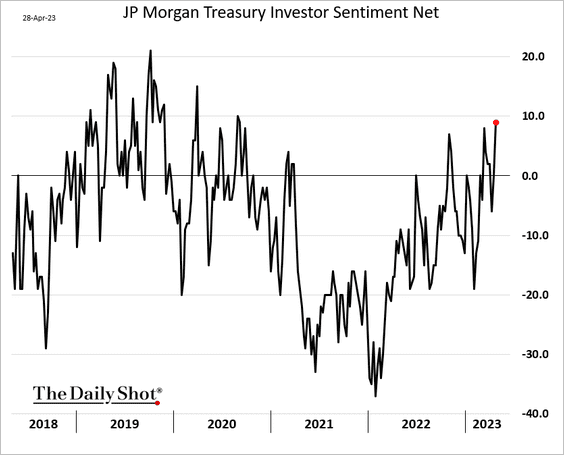
——————–
Food for Thought
1. AI-related publications in the US and China:
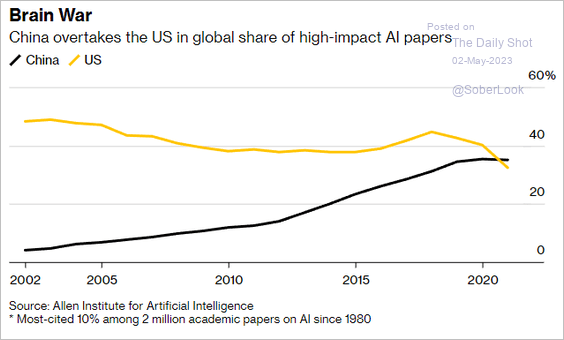 Source: @business Read full article
Source: @business Read full article
2. China’s exports to Russia:
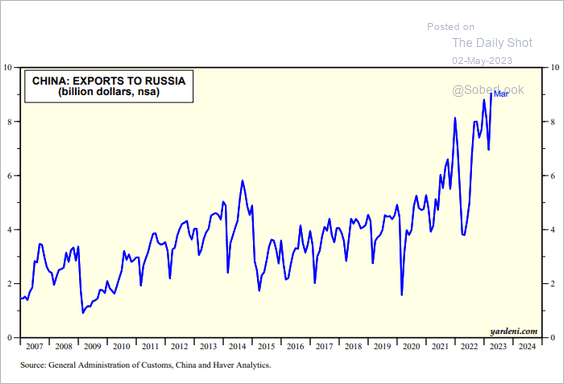 Source: Yardeni Research
Source: Yardeni Research
3. Ukraine’s reconstruction costs:
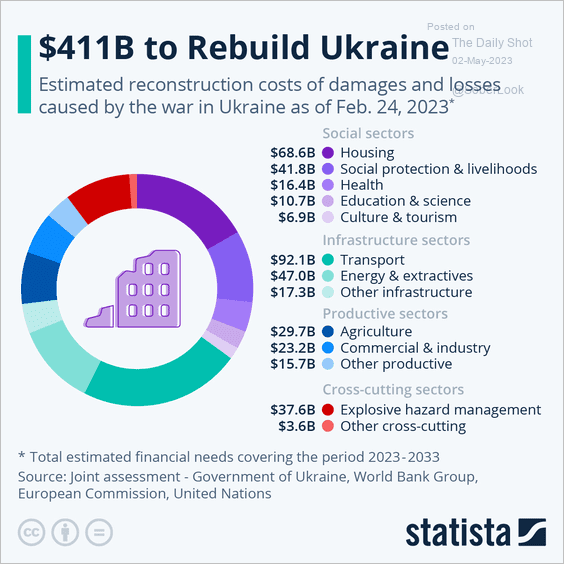 Source: Statista
Source: Statista
4. Religious affiliations in Northern Ireland:
 Source: Statista
Source: Statista
5. Emotional support from friends:
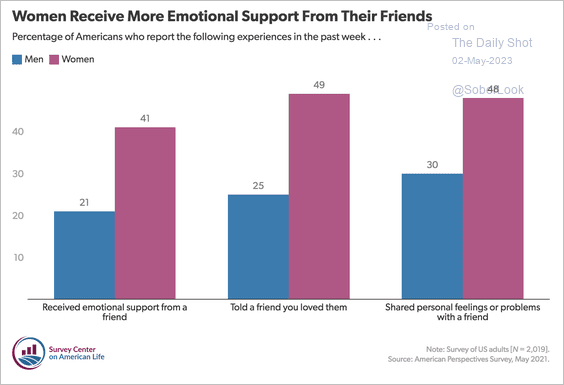 Source: Survey Center on American Life Read full article
Source: Survey Center on American Life Read full article
6. Drug overdoses among young Americans (mostly due to fentanyl):
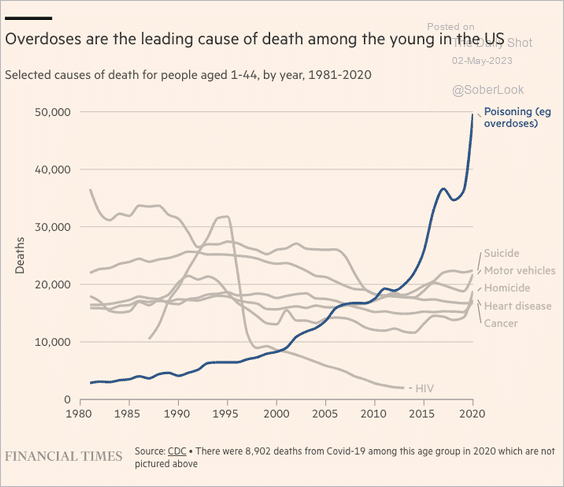 Source: @financialtimes Read full article
Source: @financialtimes Read full article
7. Teens who rarely meet with friends:
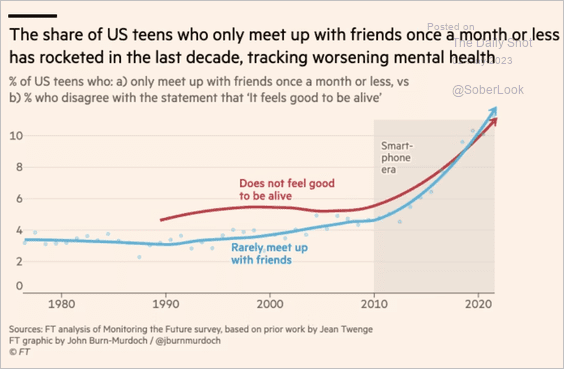 Source: @financialtimes Read full article
Source: @financialtimes Read full article
8. Working-age immigrant population:
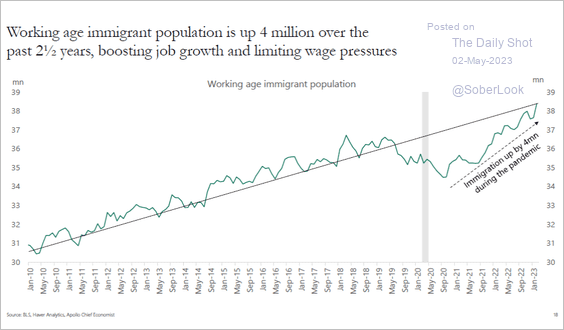 Source: Torsten Slok, Apollo
Source: Torsten Slok, Apollo
9. US tea imports:
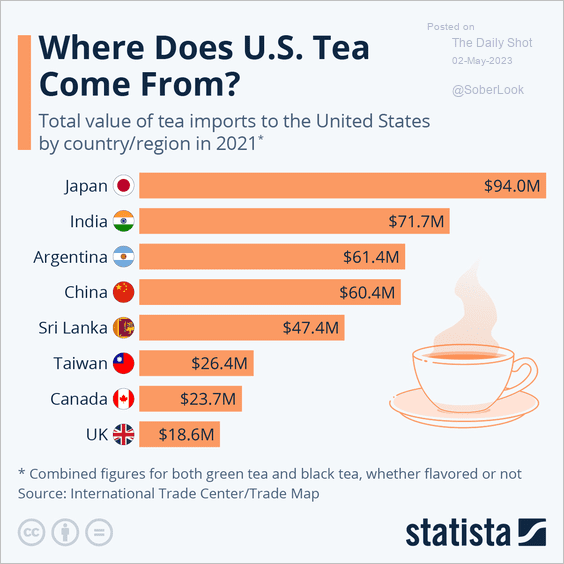 Source: Statista
Source: Statista
——————–
Back to Index
